 Pomegranate molasses is a thick syrup made by reducing pomegranate juice. It becomes a sweet, tart and tangy syrup. (It’s not actually molasses at all). It is regularly used in middle eastern cooking, particularly in Iran, Turkey and Lebanon. I bought the Cortas brand again, which it turns out was recommended here. It can be used in many different ways – marinades, salad dressings, even in cocktails when mixed properly.
Pomegranate molasses is a thick syrup made by reducing pomegranate juice. It becomes a sweet, tart and tangy syrup. (It’s not actually molasses at all). It is regularly used in middle eastern cooking, particularly in Iran, Turkey and Lebanon. I bought the Cortas brand again, which it turns out was recommended here. It can be used in many different ways – marinades, salad dressings, even in cocktails when mixed properly.
After looking through the Zaitoun cookbook (on cloudLibrary of course!), a recipe that caught my eye for a relatively simple weeknight meal was Lentil, eggplant and pomegranate stew. I made it tonight (with some characteristics omissions). I swear that before I got groceries on the weekend, I checked and I had brown lentils, but when it came time to cook, I could only find red. And somehow I completely forgot to buy sumac (another ingredient on my flavours to explore list). So anyway, red lentils and no sumac, I forged ahead.
The recipe was pretty simple: lentils, spices, eggplant, pomegranate molasses, shallots and garlic. Served with basmati rice. For a simple meal, it really packed a punch. Pomegranate molasses has a really complex flavour which came through well in this dish. I added extra to my bowl to play around with the flavours more too. It’s a very tangy, sweet and rich flavour overall. The combination with the smooth flavours of the shallots and eggplant balanced perfectly. My 1 year old liked it too, but my three year old stuck with her macaroni.
My photo of this really did not turn out well (note to self, learn to take better food photos). Here is what I’m going to pretend mine looked like:
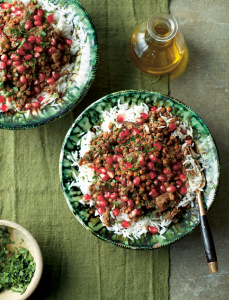
Lentil, eggplant and pomegranate stew from Zaitoun
In researching pomegranate molasses, I have also found this recipe for pomegranate glazed chicken from Bon appetit which I now want to try next!
Top photo from here
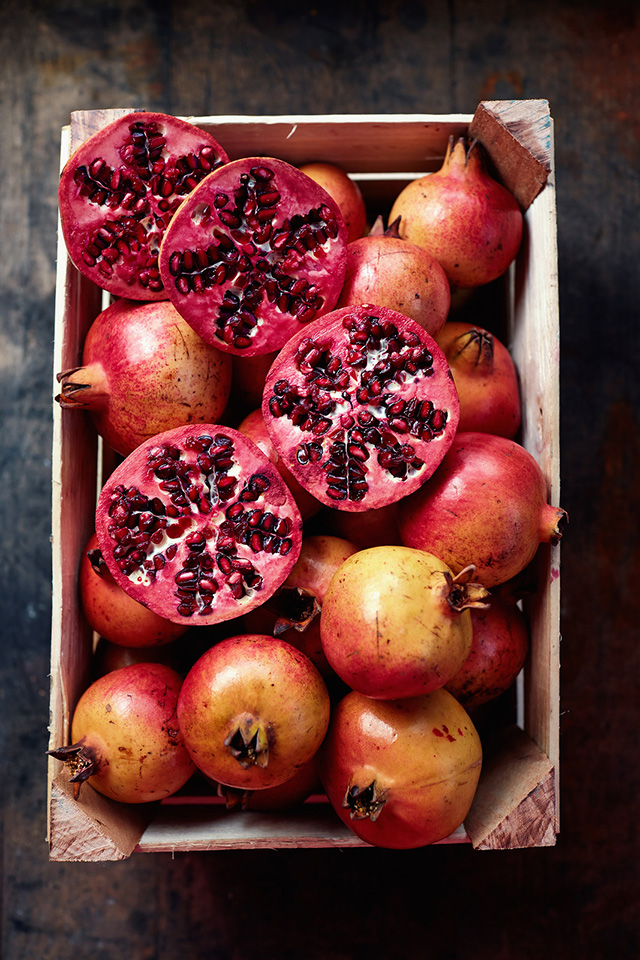

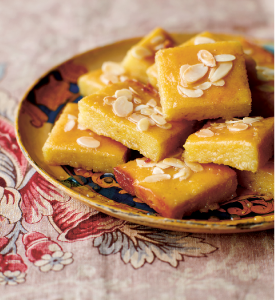
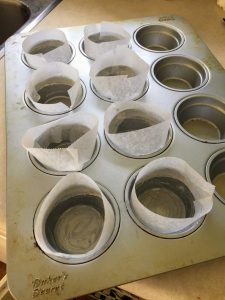
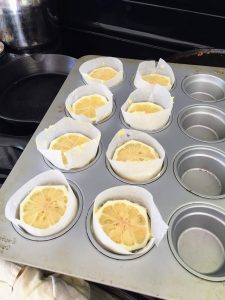 The recipe was super simple to follow and the batter mixed up quickly. It makes 8 mini cakes using a muffin pan. Making parchment collars was a new skill for me, and not one I have totally mastered yet but I am not afraid to try again! The batter has lemon zest in it and each mini cake has a thin lemon slice on top. I had to trim the edges of the slices to get them to fit.
The recipe was super simple to follow and the batter mixed up quickly. It makes 8 mini cakes using a muffin pan. Making parchment collars was a new skill for me, and not one I have totally mastered yet but I am not afraid to try again! The batter has lemon zest in it and each mini cake has a thin lemon slice on top. I had to trim the edges of the slices to get them to fit.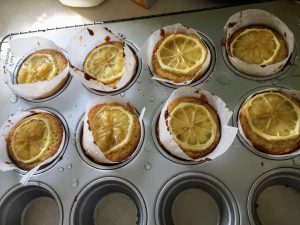 My oven always runs a little cool so I would bake these at 350 rather than 325 next time, but that’s probably different for everyone. It just took a little extra time to back and I never got the caramelization on the lemons that the recipe called for.
My oven always runs a little cool so I would bake these at 350 rather than 325 next time, but that’s probably different for everyone. It just took a little extra time to back and I never got the caramelization on the lemons that the recipe called for. At my dad’s house the cakes were a major hit. The recipe suggested serving them with yoghurt or creme fraiche, but we went with whipped cream just to be a crowd pleaser. I found I like the cake plain though to really let the rose water flavour come through. The tops of the cake, which had the most syrup were the best part. My dad, granny, cousin and husband all loved the cake. The kids were a little more fond of the whipped cream. But the adults even gobbled up the lemons from the top.I will make these again, or probably try the Zaitoun recipe first, but this is definitely worth a repeat. I would like try it as a round cake though rather than the minis. I would use parchment on the bottom of the pan too because I had a lot of sticking even with liberal butter on the pans. I would make double the amount of syrup to make sure the cakes were drenched all the way to the bottom with syrup. Yum!
At my dad’s house the cakes were a major hit. The recipe suggested serving them with yoghurt or creme fraiche, but we went with whipped cream just to be a crowd pleaser. I found I like the cake plain though to really let the rose water flavour come through. The tops of the cake, which had the most syrup were the best part. My dad, granny, cousin and husband all loved the cake. The kids were a little more fond of the whipped cream. But the adults even gobbled up the lemons from the top.I will make these again, or probably try the Zaitoun recipe first, but this is definitely worth a repeat. I would like try it as a round cake though rather than the minis. I would use parchment on the bottom of the pan too because I had a lot of sticking even with liberal butter on the pans. I would make double the amount of syrup to make sure the cakes were drenched all the way to the bottom with syrup. Yum!

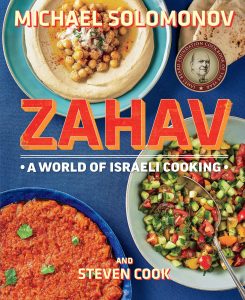
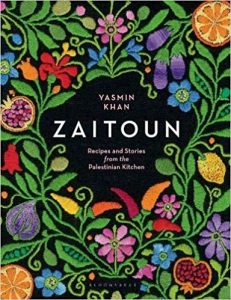
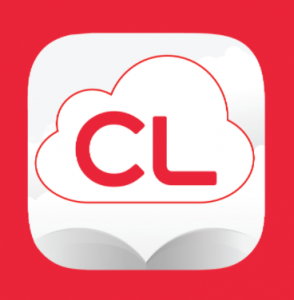 Recently I went to check the books availability again and some of the Ottolenghi books are available as ebooks. There are a lot of different way to view their digital content, so I chose and downloaded the app for
Recently I went to check the books availability again and some of the Ottolenghi books are available as ebooks. There are a lot of different way to view their digital content, so I chose and downloaded the app for 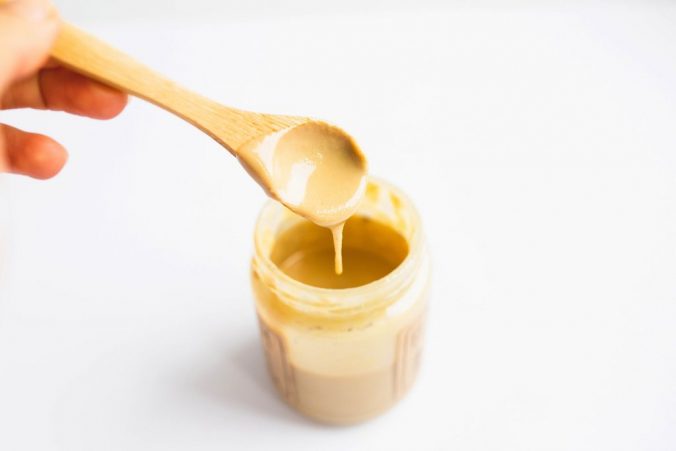
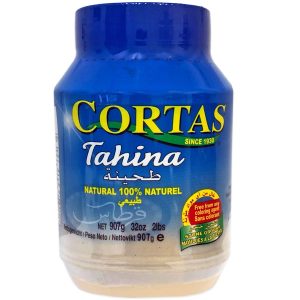 from my regular grocery store, and it would be fairly dry and non-pourable. From my reading in Ottolenghi Simple and Zahav, I learned that all tahini is not made equal, and there are strong regional differences. They recommend Lebanese, Israeli and Palestinian brands, for the creaminess and pour-ability. I went to Fig on Cedar Hill Cross Rd and got one from the Costas Brand. Pourable, creamy and delicious.
from my regular grocery store, and it would be fairly dry and non-pourable. From my reading in Ottolenghi Simple and Zahav, I learned that all tahini is not made equal, and there are strong regional differences. They recommend Lebanese, Israeli and Palestinian brands, for the creaminess and pour-ability. I went to Fig on Cedar Hill Cross Rd and got one from the Costas Brand. Pourable, creamy and delicious.
 My husband gave me a bottle of rose water two Christmases ago (Cortas brand), but I was a little nervous to use it since I know it can be overpowering if you use too much (thank you for the info Great British Bake Off). But I know it is a traditional flavour used in middle eastern cooking, particularly in baking and desserts. So this weekend I decided to go for it.
My husband gave me a bottle of rose water two Christmases ago (Cortas brand), but I was a little nervous to use it since I know it can be overpowering if you use too much (thank you for the info Great British Bake Off). But I know it is a traditional flavour used in middle eastern cooking, particularly in baking and desserts. So this weekend I decided to go for it.
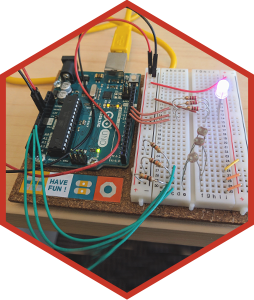
Recent Comments